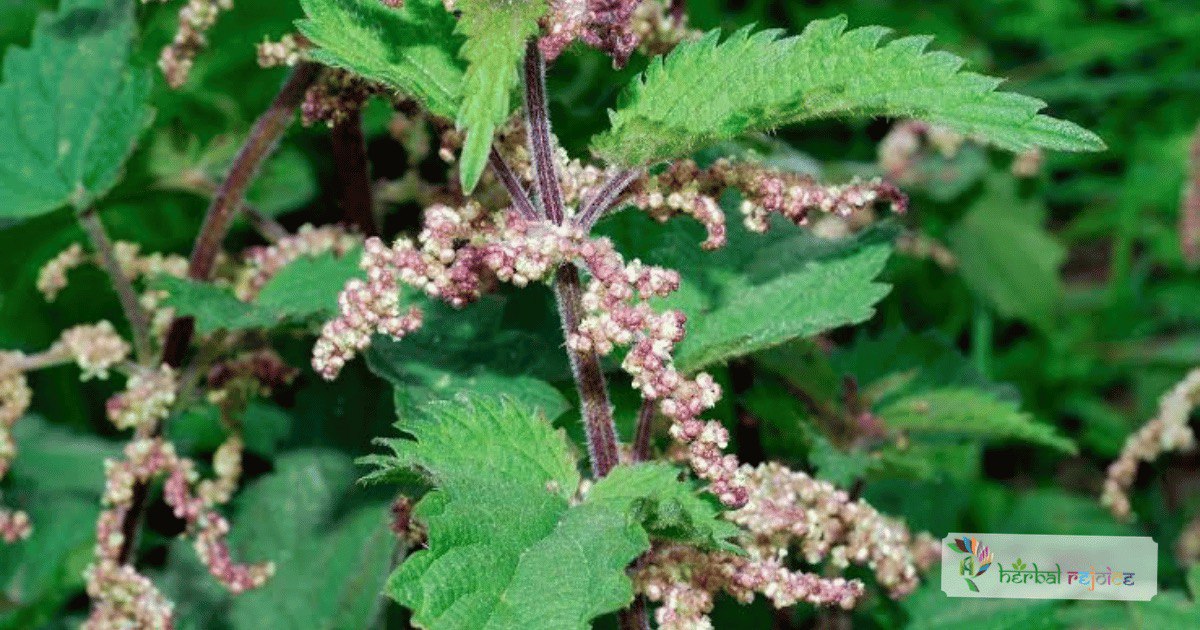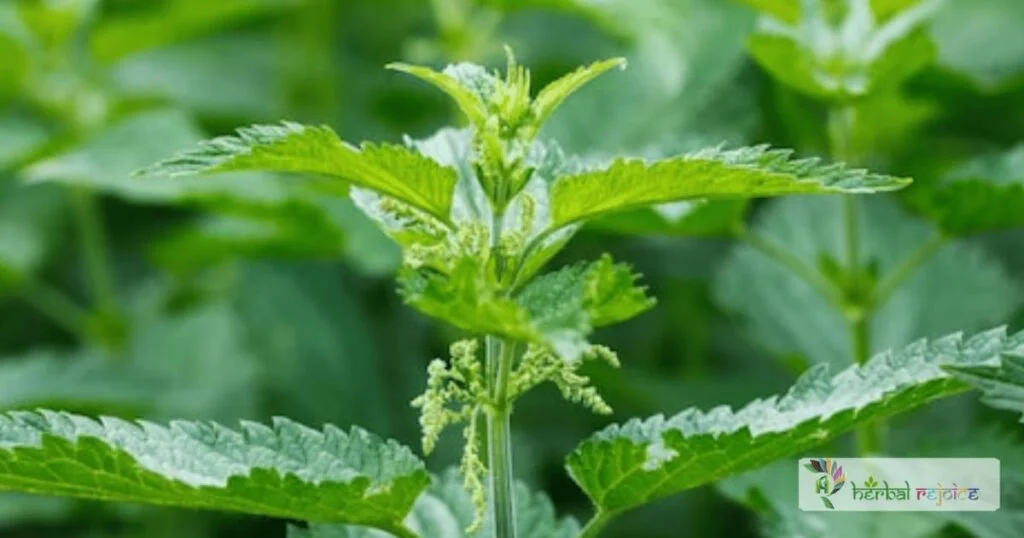Introduction:
Stinging Nettle (Urtica Dioica Linn.) is a medicinal plant found in the North-western Himalaya region. It is known for its stinging sensation upon contact, hence the name. Stinging Nettle is used to treat urinary disorders, nose bleeds, uterine hemorrhage, sciatica, rheumatism, cholecystitis, and habitual constipation.
This plant has been used in traditional medicine systems like Ayurveda, Unani, and folk medicine for its diuretic, astringent, and anti-hemorrhagic properties. The plant has also been found to eliminate uric acid from the body and detoxify blood.
Medicinal Uses of Stinging Nettle
Stinging Nettle has been proven effective in treating nephritis, haemoptysis, and other types of hemorrhages.
The plant’s above-ground parts are widely used as a supportive therapy for rheumatic ailments, both internally and externally. Internally, it can be used in irrigation therapy for inflammatory diseases of the lower urinary tract and to prevent and treat kidney gravel.
The root of Stinging Nettle is utilized in the symptomatic treatment of micturition disorders such as dysuria, pollakiuria, nocturia, and urine retention in benign prostatic hyperplasia at stages I and II.
In addition to its internal use for treating various conditions, the above-ground parts of Stinging Nettle are known for their supportive role in managing rheumatic ailments, while the root has shown promising results in treating micturition disorders in benign prostatic hyperplasia.
Clinical Studies:
Clinical experiments have established the effectiveness of Stinging Nettle in controlling uterine hemorrhage and nosebleeds. It has also shown positive results in relieving symptoms of sciatica, rheumatism, and palsy.
In Russia, an alcoholic extract of a specific Stinging Nettle species is used to treat cholecystitis and habitual constipation. Furthermore, studies have indicated that the root of Stinging Nettle can inhibit the growth of prostatic epithelial and stromal cells.
It may also counteract the effects of androgenic hormones by competitively blocking access to human sex hormone binding globulin.

Other Traditional Uses of Stinging Nettle
Stinging Nettle has a rich history of traditional use. In Europe, the juice of the leaves or roots, mixed with honey or sugar, was prescribed for bronchial asthma. In the United States, a freeze-dried preparation of the herb has been found to improve the condition of allergic rhinitis patients.
Additionally, powdered Stinging Nettle seeds were once considered a cure for goiter.
Active Constituents Of Stinging Nettle
The stinging properties of Stinging Nettle are attributed to the presence of acetylcholine, histamine, and 5-hydroxytryptamine (5-HT). Acetylcholine is present in various parts of the plant, with the leaves containing the highest concentration.
Histamine, on the other hand, is primarily found in the leaves, while betaine and choline are present in the leaves as well. Stinging Nettle leaves also contain flavonoids, sterols, carotenoids, vitamins (including C, B group, K), minerals, and plant phenolic acids.
Scopoletin, a coumarin, has been isolated from the flowers and root of Stinging Nettle. The plant’s polysaccharide fraction, obtained from an aqueous extract, has exhibited anti-inflammatory activity in rat paw edema and lymphocyte transformation tests.
Additionally, a lectin found in Stinging Nettle has been shown to stimulate the proliferation of human lymphocytes.
Safety:
Although Stinging Nettle is generally considered safe, caution should be exercised in its use. The leaf and root are contraindicated in individuals with kidney disease and during pregnancy. Furthermore, the presence of 5-hydroxytryptamine suggests that it may have uterotropic effects.
Conclusion:
Stinging Nettle (Urtica Dioica Linn.) is a versatile medicinal plant with a range of therapeutic applications. From its role in managing rheumatic ailments and urinary tract issues to its potential anti-inflammatory and immune-boosting properties, this herb offers various health benefits.
However, it is essential to follow proper guidelines and consult a healthcare professional before using Stinging Nettle for specific conditions. With its long history of traditional use and proven efficacy, Stinging Nettle continues to be a valuable plant in natural medicine.
Frequently Asked Questions(FAQs)
What is Stinging Nettle (Urtica Dioica Linn.)?
Stinging Nettle is a medicinal plant commonly found in the North-western Himalaya region.
What are the traditional uses of Stinging Nettle?
Stinging Nettle has been traditionally used in Ayurveda, Unani, and folk medicine for its diuretic, astringent, and anti-hemorrhagic properties.
How is Stinging Nettle used in treating rheumatic ailments?
The above-ground parts of Stinging Nettle are used internally and externally as a supportive therapy for rheumatic ailments.
What are the benefits of Stinging Nettle for micturition disorders?
The root of Stinging Nettle has shown promising results in treating micturition disorders in benign prostatic hyperplasia at stages I and II.
Is there any clinical evidence supporting the use of Stinging Nettle?
Yes, clinical studies have shown the effectiveness of Stinging Nettle in controlling uterine hemorrhage, nosebleeds, sciatica, rheumatism, and palsy.
How is Stinging Nettle used in treating cholecystitis and constipation?
In Russia, an alcoholic extract of a specific Stinging Nettle species is used to treat cholecystitis and habitual constipation.
Can Stinging Nettle help with allergic rhinitis?
Yes, a freeze-dried preparation of Stinging Nettle has been found to improve the condition of allergic rhinitis patients.
What were Stinging Nettle seeds once considered a cure for?
Powdered Stinging Nettle seeds were once considered a cure for goiter.
What are the active constituents of Stinging Nettle?
The active constituents in Stinging Nettle include acetylcholine, histamine, 5-hydroxytryptamine (5-HT), flavonoids, sterols, carotenoids, vitamins, minerals, and plant phenolic acids.
What are the safety precautions for using Stinging Nettle?
Stinging Nettle should be avoided by individuals with kidney disease and during pregnancy. It may also have uterotropic effects due to the presence of 5-hydroxytryptamine.
How can Stinging Nettle be used as a diuretic?
Stinging Nettle can be used as a diuretic in irrigation therapy for inflammatory diseases of the lower urinary tract and to prevent and treat kidney gravel.
How does Stinging Nettle help in managing rheumatic ailments?
Stinging Nettle’s above-ground parts have supportive properties that help manage rheumatic ailments when used internally and externally.
What conditions can Stinging Nettle be beneficial for in benign prostatic hyperplasia?
Stinging Nettle’s root has shown beneficial results in treating micturition disorders such as dysuria, pollakiuria, nocturia, and urine retention in benign prostatic hyperplasia at stages I and II.
How can Stinging Nettle be used to control uterine hemorrhage and nosebleeds?
Clinical experiments have shown that Stinging Nettle can effectively control uterine hemorrhage and nosebleeds.
What is the potential of Stinging Nettle in treating sciatica, rheumatism, and palsy?
Studies have shown positive results in relieving symptoms of sciatica, rheumatism, and palsy using Stinging Nettle.
Can Stinging Nettle be used to treat cholecystitis and habitual constipation?
Yes, in Russia, an alcoholic extract of a specific Stinging Nettle species is used to treat cholecystitis and habitual constipation.
How can Stinging Nettle improve the condition of allergic rhinitis patients?
A freeze-dried preparation of Stinging Nettle has been found to improve the condition of allergic rhinitis patients in the United States.
What are the potential benefits of Stinging Nettle seeds for goiter?
Stinging Nettle seeds were once considered a cure for goiter and may have potential benefits in treating this condition.


